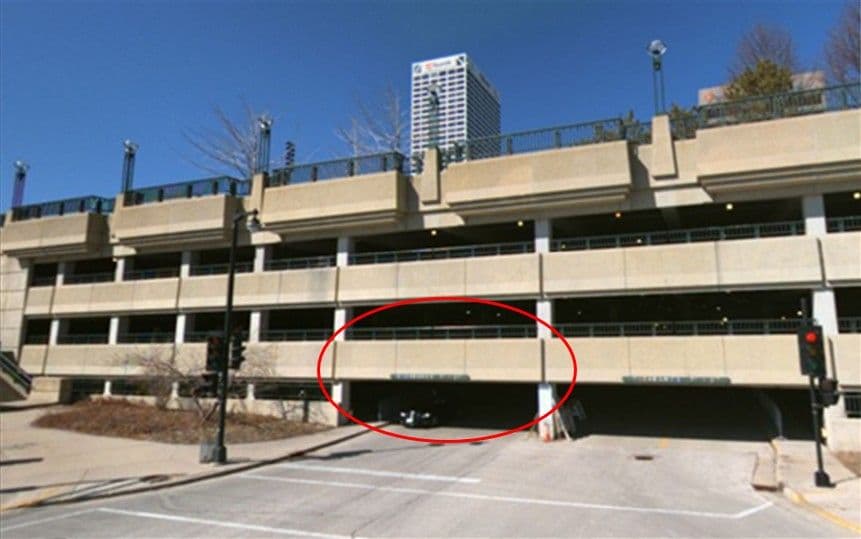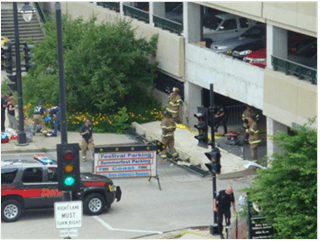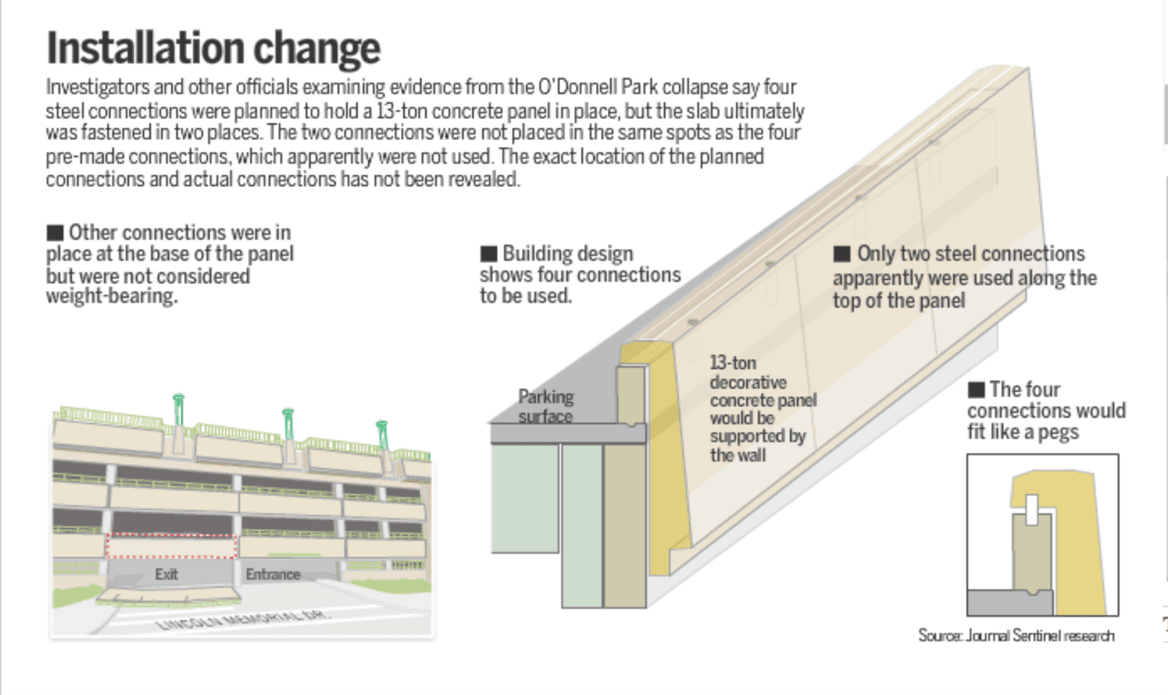
Al Foeckler
$39.2 Million Verdict in the O’Donnell Park case
![]() May 20, 2025 ||TLU n Demand
May 20, 2025 ||TLU n Demand
On June 24, 2010, the Wosinski family invited Jared Kellner to do what countless Milwaukee County residents do each year: go to Summerfest music festival along the Milwaukee lakefront. They never made it.
At approximately 4:00 p.m., Steven Wosinski parked his vehicle in the O’Donnell Park Parking Structure, located on the lakefront in Milwaukee, depicted in Figure 1 below. Steven along with his wife (Amy Wosinski), son (Eric Wosinski), and Eric’s friend (Jared Kellner) headed toward the Lincoln Memorial Drive exit of O’Donnell Park, shown in Figure 2 below, to walk to the Summerfest grounds.


Steven and Amy cleared the exit while Eric and Jared followed a short distance behind them. Then, Steven heard a strange and loud noise that caused him to turn around. What he saw next was unthinkable.
As Jared and Eric were walking through the Lincoln Memorial exit, a 13 ½ ton precast concrete architectural panel broke away from the structure and crashed to the ground. Jared was crushed to death; Amy’s left heel was damaged so badly that her lower left leg had to be amputated below the knee; and Eric, who was a step or two behind Jared, twisted backwards to avoid being crushed by the panel with such force that he actually broke his leg. After Eric realized what happened, he also realized that he was splattered in Jared’s blood.

What happened that day was unimaginable but, as we now know, preventable. The panel that fell was one of hundreds of panels that were custom designed and manufactured by Advanced Cast Stone to decoratively clad the parking structure. The panels were formed as an inverted “L,” such that the panel would rest on the upper lip of the parking structure and then cover the exterior wall of the parking structure. What the panel was resting on is called a “parapet wall,” constructed by C.D. Smith. Engineering specifications called for very specific top connections to hold these panels to the parapet wall. Most simply, four stainless steel pins were to be threaded up into the underside of the panel’s upper lip to form a “male” connection, while four steel cups were to be poured in place in the parapet wall as a “female” connection. The stainless steel pins were supposed to be dropped down into the steel cups that were filled with grout to form four solid connections. The best visual depiction for how the panel was designed to be connected to the parapet wall is contained in the following demonstrative graphic from the Milwaukee Journal Sentinel:

The panel that fell was designated “panel 56AL.”After the June 24, 2010 tragedy, investigators found that the originally engineered connections on this panel were completely abandoned.Not only was there no pins in any of the four sleeves, investigators found that there were two holes drilled through the top of the panel into the parapet wall with a piece of rebar driven down each hole.When investigators compared their findings to the final construction plans for the panels at O’Donnell Park, called “As-Built” drawings, they found something astonishing:there was no indication on the As-Built drawings that the original connections were abandoned in favor of these two makeshift connections.Instead, the “As-Built” drawings represented that the panel was installed according to specifications.
In the wake of this tragedy and after a couple years of discovery, a nearly six week trial was held in October and November 2013 in Milwaukee County Circuit Court, Judge Christopher Foley presiding.
If you can't attend Live, Watch On Demand